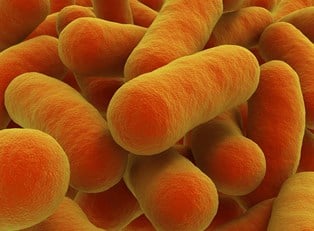Salmonellosis is an infection of Salmonella bacteria, thus the infection is generally only called “salmonella,” referencing the responsible pathogens. The Salmonellae group belongs to the Enterobacteriaceae family and are closely related to Escherichia coli, more often referred to as “E. coli.”
A bacterium of the gastrointestinal tract, Salmonella is a leading cause of foodborne illness -- salmonellosis. Also among this group are bacterium responsible for typhoid fever, endovascular and focal infections, and enterocolitis. Here’s a look at the symptoms specific to salmonellosis.
Symptomatic Appearance
Salmonella can be transferred via a variety of foods, from raw eggs to undercooked meat. Some types of Salmonella have even been transferred through peanut products. It can take as little as six hours or as long as three days for symptoms to appear, though the average range is 12 to 36 hours.
The illness generally runs its course in less than a week. There appears to be a connection between how many bacteria invade the gastrointestinal tract and how quickly symptoms appear. It may also cause the illness to be more serious. Furthermore, patients who are elderly, very young, or already unwell may respond similarly to lower amounts of bacteria.
Gastrointestinal Distress
Salmonellosis, or nontyphoidal Salmonella infections, can be extremely uncomfortable for the gastrointestinal tract. A mild case may consist of extremely watery diarrhea, much like other foodborne illnesses (food poisoning). Diarrhea generally lasts anywhere from three days to a week; it may be serious enough to be nearly constant and almost uncontrollable.
Although salmonellosis may simply run its course with no concerns in a generally healthy individual, it can cause dehydration, especially in special populations, and may require hospitalization. Although diarrhea ceases within a week, it can be many months before the bowels are completely normal again. Abdominal cramping often accompanies this watery stool, but blood should not be present. This is often indicative of a different, potentially more dangerous bacterial infection such as E. coli.
Additional Symptoms
There are other symptoms that may arise from salmonellosis, depending on the level of infection and the overall health of the person who is infected. Fever may occur, often with the onset of diarrhea, as the body begins attempting to fight off the bacterium. A fever caused by salmonellosis generally resolves within two days of onset. Additionally, you may experience chills. Headaches and myalgia (aching or painful muscles) may also be present; this may have something to do with the dehydration that can occur. Essentially, salmonellosis can appear as a very extreme flu-like illness, without any respiratory symptoms.
Prognosis and Complications
Even after recovery, it is possible for the infection to reoccur. Furthermore, in more serious cases, particularly those affected by severe dehydration, there is the potential for salmonellosis to break into the bloodstream and then be spread throughout the body. This requires immediate treatment with antibiotics, as such cases of salmonellosis can be fatal. Additionally, although most patients recover fully, there is the potential for complications such as painful urination, reactive arthritis (which can turn into chronic arthritis), or irritable eyes.



